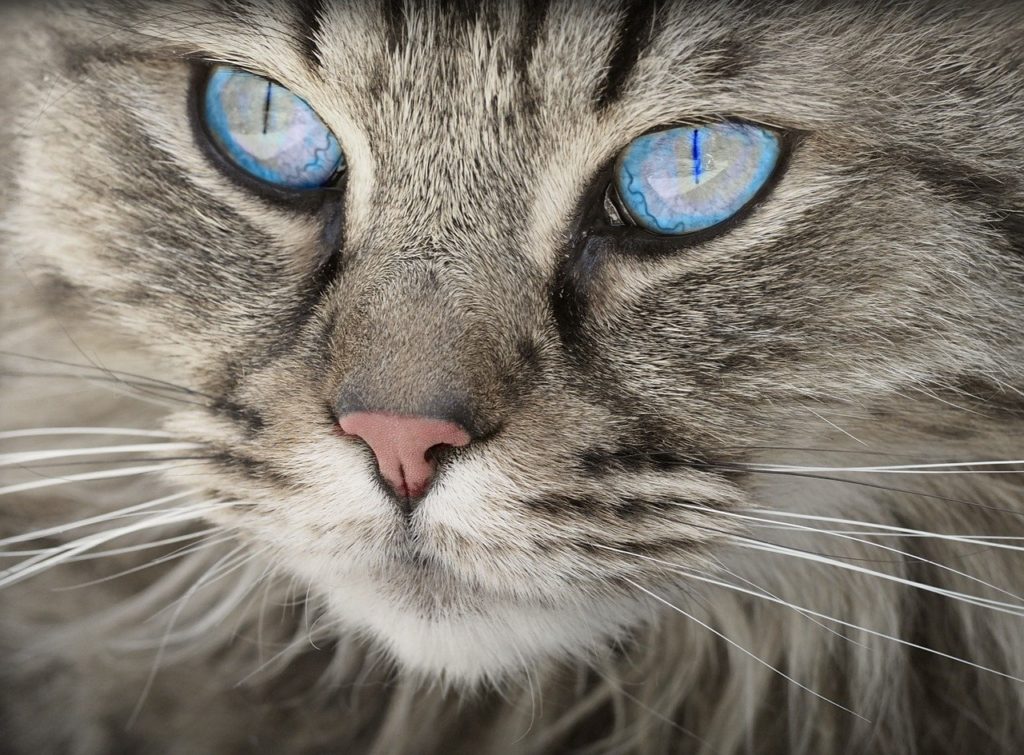Summing Up: The Evidence for Animal Afterlife
In earlier articles, I’ve summarized the published evidence for animal afterlife provided by near-death experience, evidential mediumship, deathbed visions, after-death communication, ghost sightings, and other areas.
What follows is a brief summary of evidence in each area, followed by strengths and weaknesses, then a verdict.

After-Death Communication (ADC)
I found 105 published cases of visual ADCs involving animals.
In 37% of the cases, we just had the person’s word for it; few additional corroborating features was present.
However, in about two-thirds of the cases (63%), there were additional corroborating features, which added to the credibility of the account:
- 18 cases with multiple witnesses
- 21 cases where the person did not know the animal was dead and only learned about it later
- 12 cases where the person had no emotional attachment to the animal (so, no grief)
- Several cases in which skeptics had ADCs
- Physical movement in the environment that coincided with what was seen
- Several cases in which the ADC was fortuitously timed, such that it seemed to warn the person of an imminent danger
We reviewed alternative explanations for these ADCs (grief, hallucinations, wishful thinking) and many cases that refuted those explanations.
In addition to visual ADCs, there were
- 55 auditory ADCs
- 41 tactile ADCs
- 6 olfactory ADCs
As in the case of visual ADCs, many of the auditory, tactile, and olfactory ADCs had corroborating features that enhanced their credibility – multiple witnesses, people encountering animals they did not know had died, or ADCs timed to seemingly rescue a person from danger.
That totals 207 ADCs involving animals. Apart from these cases, there were many more ADC reports on the internet. For example, there are an estimated 280 ADC reports involving animals on the ADCRF website alone. These were not included here, as I limited myself to the published literature (and for other reasons discussed in the article). In any case, 207 is a significant underestimate of the actual number of reports.
Ghost Sightings
When distinguished from ADCs, there were 51 ghost sightings of animals in the published literature. There were many more reports on the internet, which were not included here.
In most cases, there were corroborating factors adding to the credibility of these accounts. For example, there were many cases involving multiple witnesses or multiple sightings over time. There were two cases that involved 6 different witnesses who saw the same “deceased” animal on separate occasions, each of them providing the same, detailed physical description of the animal.
Evidential Mediumship
Hundreds of mediums, both general and evidential, have attested to animals showing up in their readings and being present in the afterlife. I am not aware of any exceptions to this (i.e., a medium who has stated that animals do not exist in the afterlife). These attestations date back to at least the 1800s.
In addition to voluminous testimony from hundreds of mediums, there is also a well-controlled scientific study on this topic. Results showed that mediums could pick up specific, accurate information about deceased pets which they could not have known through normal means. Since alternative explanations were ruled out by multiple layers of control, the most likely explanation was that the information was coming from the “deceased” animals.

In addition to hundreds of general reports in the literature, there are also 91 specific evidential cases involving animals. As always, this is a significant underestimate of the actual number of cases out there, since unpublished cases or cases scattered around the internet were not included.
Skeptical explanations of these cases (fraud, cold reading, selective reporting, telepathy) were discussed, as were multiple cases that defied these explanations.
Near-Death Experience (NDE)
NDEs make a strong case for human afterlife. Over the past several decades, careful researchers have repeatedly debunked skeptical alternative explanations.
I was able to locate 56 cases of NDEs involving animals. We know this is a significant underestimate of the actual cases. For example, one NDE researcher, a Cambridge psychiatrist, stated that he had hundreds of unpublished NDE accounts involving animals. There are probably hundreds more out there in other investigators’ files, scattered about the internet, or buried in large NDE databases.
Many of the 56 cases had corroborating validity features:
- The NDE experiencer did not know that the animal in the NDE had passed on; they only learned about it later
- The NDE experiencer did not know the animal seen in the NDE even existed; they only learned about it later
- The NDE experiencer had no emotional connection to the animals
- The experience of the NDE contradicted the person’s long-held religious beliefs about animals not having an afterlife
It is also worth noting that these accounts parallel human NDE cases in several ways, suggesting that they may be describing the same reality.
Death-Bed Visions (DBVs)
Several leading DBV investigators have stated that animals appear in DBVs.
Skeptical alternative explanations for DBVs (e.g., hallucination, medical condition, drugs) have been discounted by careful DBV researchers.
Since the DBV literature is heavily focused on human beings, reports of DBVs involving animals are not plentiful. However, they do exist, and several examples were described. This represents a small slice of the actual number of reports. Leading DBV researchers stated that, in their files, they had many examples of animals appearing in DBVs, but these cases remain unpublished.
Other Areas of Evidence
We also reviewed the following:
- 22 cases of animals appearing in physical mediumship
- A dozen cases of animals described in astral travel
- A dozen cases of spirit photography involving animals
I offered some reasons to be cautious about assigning too much weight to these reports. They often don’t have the same level of corroboration that other areas have. Nevertheless, some evidential cases were reviewed.
Strengths and Weaknesses
The evidence has strengths and weaknesses. Let me briefly review both, then we’ll come to a conclusion.

Weaknesses of the Evidence
The main weakness is that the evidence here is largely anecdotal – that is, based on individual experience and observation. Observational data have an important place in the search for truth, but they are not on the same level, evidentially, as controlled scientific research. Anecdotal data is subject to a variety of distortions. I’ve addressed some of these potential distortions along the way (e.g., wishful thinking, grief-fueled hallucinations, etc.), but the mostly anecdotal nature of this evidence is a genuine limitation.
Secondly, some areas (e.g., astral travel, spirit photography) do not have the evidential support that others do. As a result, we have to consider the evidence from these areas rather tentatively.
A third weakness is that I limited myself to the published literature. Therefore, many hundreds of reports were not included — unpublished ones, for instance, or reports buried in large, unsearchable internet databases, or a multitude of reports scattered around the internet. I can’t even claim to have made an exhaustive study of the published literature. I am sure there are other published reports that I missed. I simply did what I could with the time and resources I had.
Strengths of the Evidence
First, despite the literature’s overwhelming focus on human beings, animals still manage to show up in large numbers. There are hundreds if not thousands of reports supporting animal afterlife, stretching back over at least two centuries.
Second, since I focused only on the published literature, the numbers here are a substantial underestimate of the actual cases. We know for a fact that there are hundreds of unpublished cases, and hundreds more buried on internet databases, which were not included. Above, I classified this as a weakness, but it can also be seen as a strength – in the sense that the evidence here just represents the tip of the iceberg.
Third, we reviewed many cases that debunk common alternative explanations. In addition, the human-centered literature in these areas has refuted most skeptical counterarguments.
Fourth, there is a high level of consistency in these reports, both within and between areas. All of the accounts tell the same general story. They are all pointing in the same direction – toward animal afterlife. That consistency adds to their credibility.
In addition to consistency within and between areas, there is also consistency between accounts involving animals and human beings. This adds additional credibility to the accounts. It also helps to offset the main weakness, the anecdotal nature of most evidence. Since the reports regarding animals parallel the reports of humans, it is reasonable to apply the validity conferred by scientific research in humans (which is fairly extensive in some areas, such as NDEs and mediumship) to animals.
Fifth, the evidence across areas is additive. Professor Stafford Betty uses the image of a bundle of sticks to convey this idea. Although you might be able to break a single stick, as you add more and more sticks to a bundle, it gets harder and harder to break. That’s what we have here. Although any individual account can be picked apart, the evidence needs to be considered as a whole.
Sixth, the white crow principle applies. William James said, “If you wish to upset the law that all crows are black, you mustn’t seek to show that no crows are; it is enough to show that one crow is white.” In other words, to establish that animals have an afterlife, you don’t need for all of these accounts to be true. You just need one of them to be true.
The Verdict
So, what do you think? Based on the evidence, and considering its weaknesses and strengths, do you believe animals have an afterlife?

Your answer doesn’t have to be “yes” or “no.” Maybe it’s 90/10 — you’re 90% sure that animals have an afterlife, but you still have 10% doubt. Or maybe it’s more like 50/50.
Fun with Numbers
If you want more precision in your estimate, you might appreciate a method I learned from Stafford Betty. It rests on the fact that, in order to believe that animal afterlife does not exist, the evidence in each of these areas would have to be baseless — not just one area, but all of them, at the same time.
Here’s how it works. It takes about three minutes, a scratch pad, and a calculator.
- For each area of evidence (ADCs, ghosts, DBVs, mediumship, NDEs, and Other), ask, “Based on evidence in that area, what do I think the likelihood is that animals have an afterlife?” Frame it in terms like 70/30 or 90/10. For example, let’s say you’re looking at NDEs, and you think NDE evidence suggests an 80% chance that animals have an afterlife. So, you’d write down 80/20. Do that for each area.
- Take the second number in that pair (the 20, in the example above), and convert it to a decimal. Just divide by 100. So 20% = 0.20. Do that for each area.
- Now multiply all of those decimals together. That gives you the probability, based on all these areas of evidence, that animals do not have an afterlife.
- Multiply that number by 100 to get you back to a percentage.
- Now subtract that number from 100. That gives you the probability, expressed as a percentage, that animals do have an afterlife.
Here is an example. It’s just an example. I tried to keep it fairly conservative. The key figures are the decimals in parentheses. Those are what you multiply together to get the results (see steps 3-5).
- ADCs: 90/10 (.10)
- Ghosts: 70/30 (.30)
- Evidential Mediumship: 90/10 (.10)
- NDEs: 80/20 (.20)
- DBVs: 60/40 (.40)
- Other (physical mediumship, astral travel, spirit photography): 30/70 (.70)
That gives you:
- Probability of animals not having an afterlife: 0.0168%.
- Probability of animals having an afterlife: 99.9832%
That’s pretty impressive — a 99.98% probability, based on the evidence, that animals have an afterlife. That’s far beyond the level of probability used to judge the reliability of scientific findings. It’s way beyond the level of confidence required in a court of law. Of course, it’s still just a subjective estimate of the evidence, not objective proof. Still, this can give you a clearer sense of how strong a case the evidence makes, based on your own assessment.
A Final Word
I’m aware that I’m only speaking to a part of who you are — the rational, analytical part. Ultimately, belief in animal afterlife is not only, or even primarily, a matter of rational analysis, weighing evidence, or doing probabilistic calculations. It is a decision you make with your head and your heart.

The decision is based not just on evidence and rational arguments, but on a lot more — your own worldview (including general beliefs about God and the afterlife), your personal experiences, your emotional inclinations and intuitions, and your appreciation of and connection with animals.
So, I am not pretending that this issue is all about about evidence and argument. It isn’t. It’s about much more than that.
Still, though, evidence and reason do play an important role, for some more than others. Speaking for myself, I don’t want my belief in animal afterlife to be one of blind faith — believing just because it feels good or because I want it to be true. I want my beliefs, especially about something this important, to be consistent with evidence and reason. I assume some of you feel the same.
No, evidence and reason aren’t the whole story. But examining the evidence in light of reason can strengthen your belief in animal afterlife. It can make you feel like your beliefs are solidly grounded, rather than just based on feelings and desires.
The evidence exists in a wide variety of forms. It is voluminous and consistent. It is my sincere hope that, by seeing some of that evidence laid out here, this has helped to bolster your conviction of animal afterlife — to place it on firmer ground.
I wish you and your animals the best.
4 thoughts on “Summing Up: The Evidence for Animal Afterlife”
My experience…soon after moving to my current house I heard loud bouncing noises upstairs. Like a ball being bounced in the floor. Went upstairs..nothing amiss. This happened numerous times.
One day after arriving home from town the bouncing was so loud I was afraid to go upstairs…considered calling 911. At the time my wolf hybrid and golden retriever were alive..the bouncing did not bother them.
Then….one day I opened the door from downstairs to upstairs and as I opened the door I looked down…there sat a little translucent kitty..the door passed through this kitty and poof, kitty gone.
I said oh so you have been upstairs bouncing balls. You can live with us but no more bouncing balls.
Never heard the bouncing noise again.
Interesting. I wonder what the story is behind that kitty. Thanks for sharing.
You just helped me a lot here by this article. I was brought up that animals don’t have souls and just lost my best friend Sasha. (Dog) I also would love to talk about my own experience 6 years ago if you’re interested. Maybe you can take my information and compare it to others?
Hi, Tiffany. I’m glad it helped. As for sharing your story, feel free to do that here if you like. When I post a blog link on a Facebook group, people will usually chime in with their own stories of ADC encounters and other experiences. Those don’t appear here on the blog, but there have been several dozens of them. I haven’t included those stories here, because I’m just covering the published literature, but there are thousands of other reports scattered about the internet. I’ve had my own experiences as well.
Comments are closed.